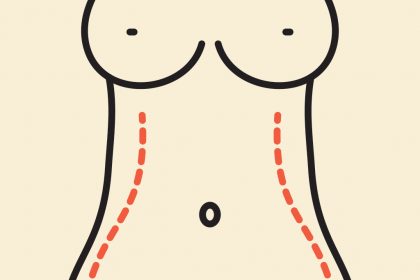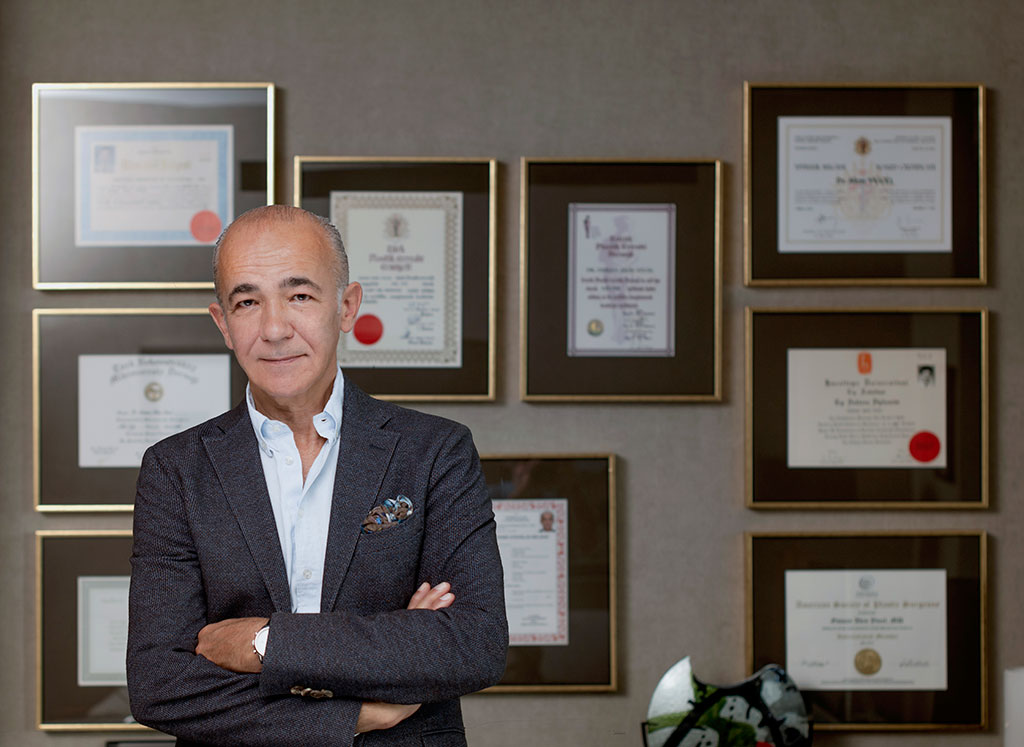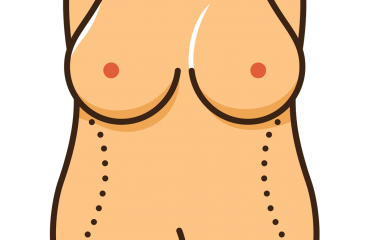
A tight, slightly inward curved belly, light reflexes on the abdominal muscles, a well-developed navel, adorned with a nice piercing perhaps, and a well-shape small of the back are the features of a female dream body.
In men, the six pack is the measure of all things. A well-contoured abdomen gives a sportive, active appearance. However, as age advances, the body begins to loose shape, in particular around the waist. Childbirths often further aggravate this process. Over time, a “muffin top” grows and expands around our waistline, which is most pronounced when we sit down. Once it has formed, it requires great willpower to get rid of it again.
For many women past middle age, tightening of the abdominal region is high up on their wish list. To achieve a lasting effect, patients have to pay attention to their weight, exercise regularly and use skincare products.
Frequently asked questions about abdominal aesthetics:
What are the main aesthetic problems in the abdominal area?
We distinguish 4 problem areas:
Visceral fat: It concerns mainly men, and is considered an indicator of future heart diseases.
Slackening of the abdominal muscles: A condition see in women in particular after childbirths. After a second child, it is almost impossible to regain one’s previous shape with physical exercises alone.
Fat deposits under the skin: Besides genetic factors, their size is determined by lifestyle choices and dietary habits.
Loosening and sagging of the skin: The two most important reasons are childbirths and extreme weight gains and losses; they destroy the natural elasticity of the skin.
What can be done to counter the problems?
Visceral fat can be reduced only through exercise and diet; in other words you must change your habits and lifestyle: eat healthy food and do sports. The condition is most prevalent among men, many of whom are no good candidates for abdominal tightening procedures.
If physical exercises bring no improvement, this is usually the case after multiple births, the abdominal muscles need to be realigned (stitched together), and the abdominal wall needs to be tightened surgically. The intervention is performed either through an open cut or endoscopically through a small incision in the skin.
A diet regime is the best way of losing fat deposits under the skin. Hereditary conditions may, however, prevent a loss of fatty tissue through sports and diet alone. In these cases liposhaping or high-definition liposhaping (link) are viable alternatives. If these techniques alone are not sufficient due to low skin elasticity, they should be combined with a tightening procedure.
In patients with low skin elasticity and a bulging waistline, surgical abdominal tightening is the only feasible alternative. In some cases a mini-abdominoplasty (link) may be sufficient; others may require a full abdominoplasty (link). If a circumferential removal of sagging skin is required, the procedure is called belt lipectomy.
Who is a good candidate for abdominoplasty (tummy tuck)?
Moderately overweight women with a loose abdominal wall and limited fat deposits in the abdomen and on the waist.
How is the abdominoplasty (tummy tuck) performed?
The first step is liposuction; it may be combined with liposhaping. It is followed by an incision three times the size of a Caesarean section, which is designed to be easily hidden in clothing. The skin is lifted up as high as the lower ribs, then the abdominal muscles are repaired and tightened, the navel is repositioned a bit higher up and the excess skin is excised.
If the skin is not too loose and the abdominal wall not too weak, the intervention is performed endoscopically through a small hole in the skin or through an old scar, e.g. a Caesarean incision.
Abdominal tightening can also be carried out in overweight people. The main purpose here is less to improve looks but to improve the quality of life.
What happens after the operation?
The operation is performed in a hospital under general anaesthesia and takes 2-4 hours. Four hours after the intervention, patients can eat and get up. Contrary to widely held beliefs, an expertly performed surgery of this kind causes only little pain. Patients can usually be discharged the next day. After 2 days, they can take a bath, and after 1 week return to their daily routines. After endoscopic surgery, the recovery time is even shorter.
How satisfied are patients after the surgery?
Abdominal surgery changes the body shape considerably. Patients are freed from a heavy burden, they have a wider choice in clothing, they are motivated to become physically active, do sports. They are relieved of chronic constipation and uncontrolled wetting. These improvements determine their satisfaction.
The biggest problem is scars. However, they fade with time. Endoscopic surgery leaves only minimal traces.


